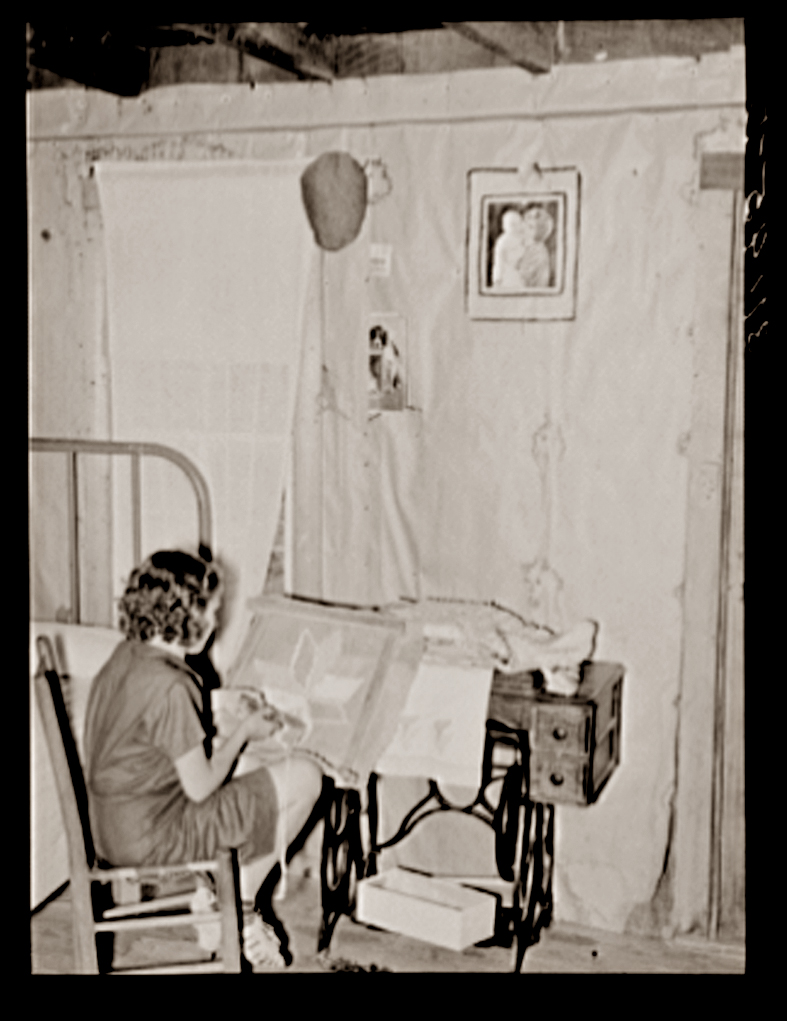In Europe and the United States many primitive long piled shaggy variations exist in the form of home made rugs. U.T Sirelius made what he calls an exhaustive study of "The Ryijy-Rugs of Finland"1 in 1926, producing a sumptuous limited edition book with 200 copies available in the English language edition. Rya rugs of Finland and Sweden are coarsely knotted long-piled bed covers. Early in the twentieth century Europeans began making hooked rugs with simple designs influenced by the arts and crafts movement. In Spain the Alpujarra rug is also produced as a bed cover with a unique knotting process requiring gauge rods, reminiscent of rare looped pile Pashtun Moqari rugs from Eastern Afghanistan or Tibetan looped pile rugs .2
William Winthrop Kent's book Rare Hooked Rugs was published in 19413 - In an attempt to link Primitive Hooked Rugs with the past Kent explains in The Hooked Rug, "The origin of the method was discussed and proved to have been not American nor English, but Scandanavian, or from some prehistoric source antedating the Bronze Age, and carried on by Viking families. It was also known in Scotland where it appeared in very early days." 4
Like Sirelius, Kent devoted a significant degree of his life to the dissemination of information about primitive shaggy rugs, in Kent's world these were American Hooked Rugs, and devotion to the craft is now popularly known as Primitive Rug Hooking. Kent was a legend in his time writing several books on the subject and designing patterns for primitive rug hooking. Kents publications included The Hooked Rug, Rare Hooked Rugs and Hooked Rug Design. In the first chapter of Rare Hooked Rugs titled PRIMITIVE Kent links the word primitive to hooked rugs, "floral forms and geometrical composition and coloring are closely following in the highest types of European and American hooking but also that the primitive conceptions of obscure farm and village workers are now coming into their own as never before." 5
Kent uses the word primitive in reference to people and place; "obscure farm and village workers", further referencing Coptic fabrics in an attempt to associate primitive with antiquity. "Since the question of the origin of hooking was raised by me and discussed in detail in my book, The Hooked Rug, an interesting research has begun in America and England and probably in Germany. Professor Rudolf Riefenstahl of New York, the well-known authority on oriental rugs and other early crafts and activities, told me that he was inclined to favor my supposition that Coptic wool mats and fabrics of a shaggy sort were done by hooking and not pulled tight by needle work over a stick or rod as many people averred. This, if so, and as my book suggests, makes our study of Primitives in rugs even more engrossing and valuable for the craft." 6
Considering the popular use of the term Primitive Rug Hooking today and the popularity of Kent's work, the man himself may have been responsible for creating the link between the early history of oriental rugs and the term Primitive Rug linking both.

1. Sirelius. U.T. The Ryijy-Rugs of Finland Otavia Publishing Company Helsinki 1926
2. Wertime. J Back to Basics: Primitive Pile Rugs of West and Central Asia
Hali 100 1998. 92
3. Kent W. W. Rare Hooked Rugs Pond-Ekberg Springfield Massachusetts 1941.
4. Kent W. W. loc. cit. Introduction.
5. Kent W. W. loc. cit. 3
6. Kent W. W. loc. cit. 11-13
Image Attribution:
Title: Southeast Missouri Farms. Girl making a hooked rug in bedroom of shack home.
La Forge, Missouri
Creator(s): Lee, Russell, 1903-1986, photographer
Date Created/Published: 1938 May.
Library of Congress, Prints & Photographs Division, FSA/OWI Collection,
[reproduction number, e.g., LC-USF34-031145-D]
(b&w film neg.)



